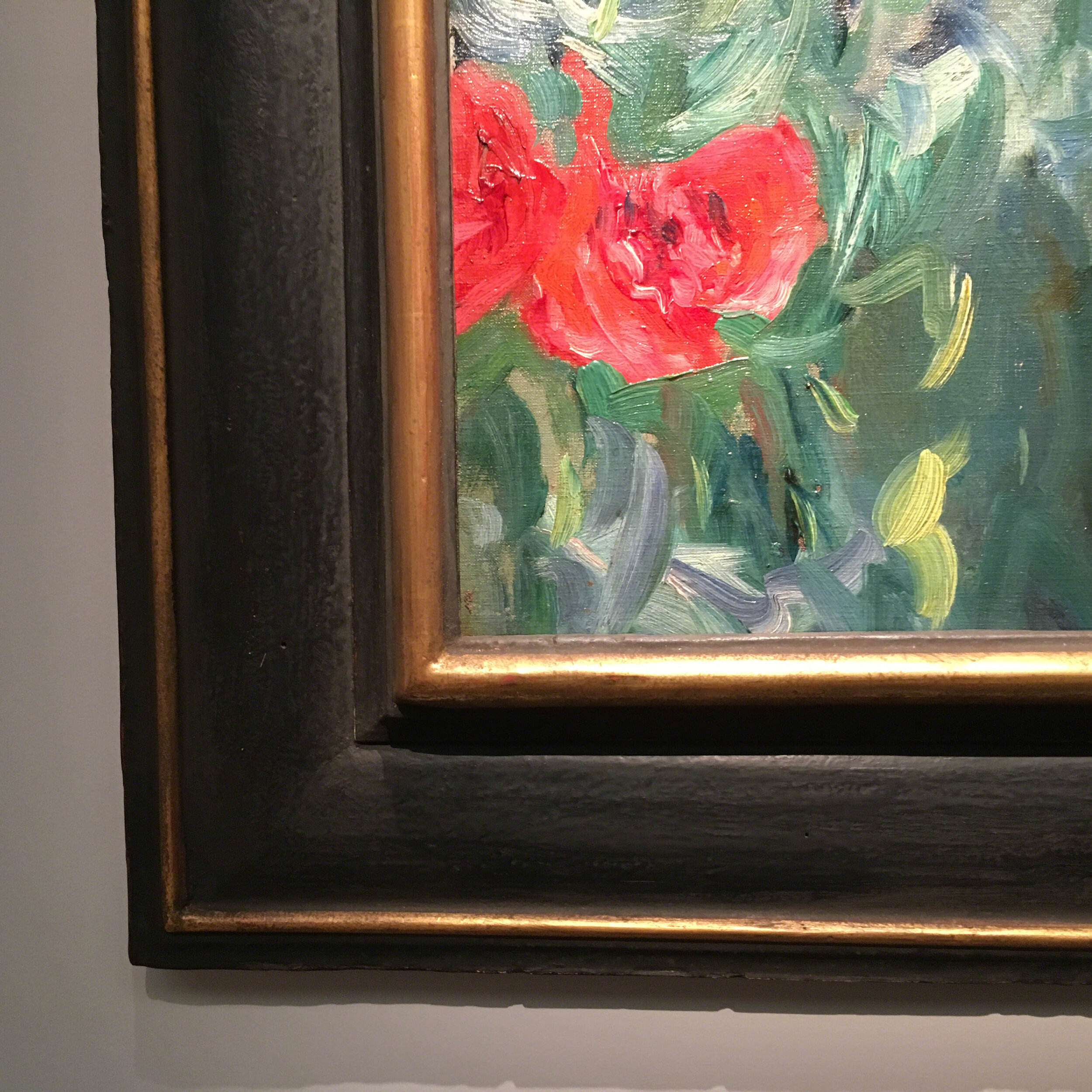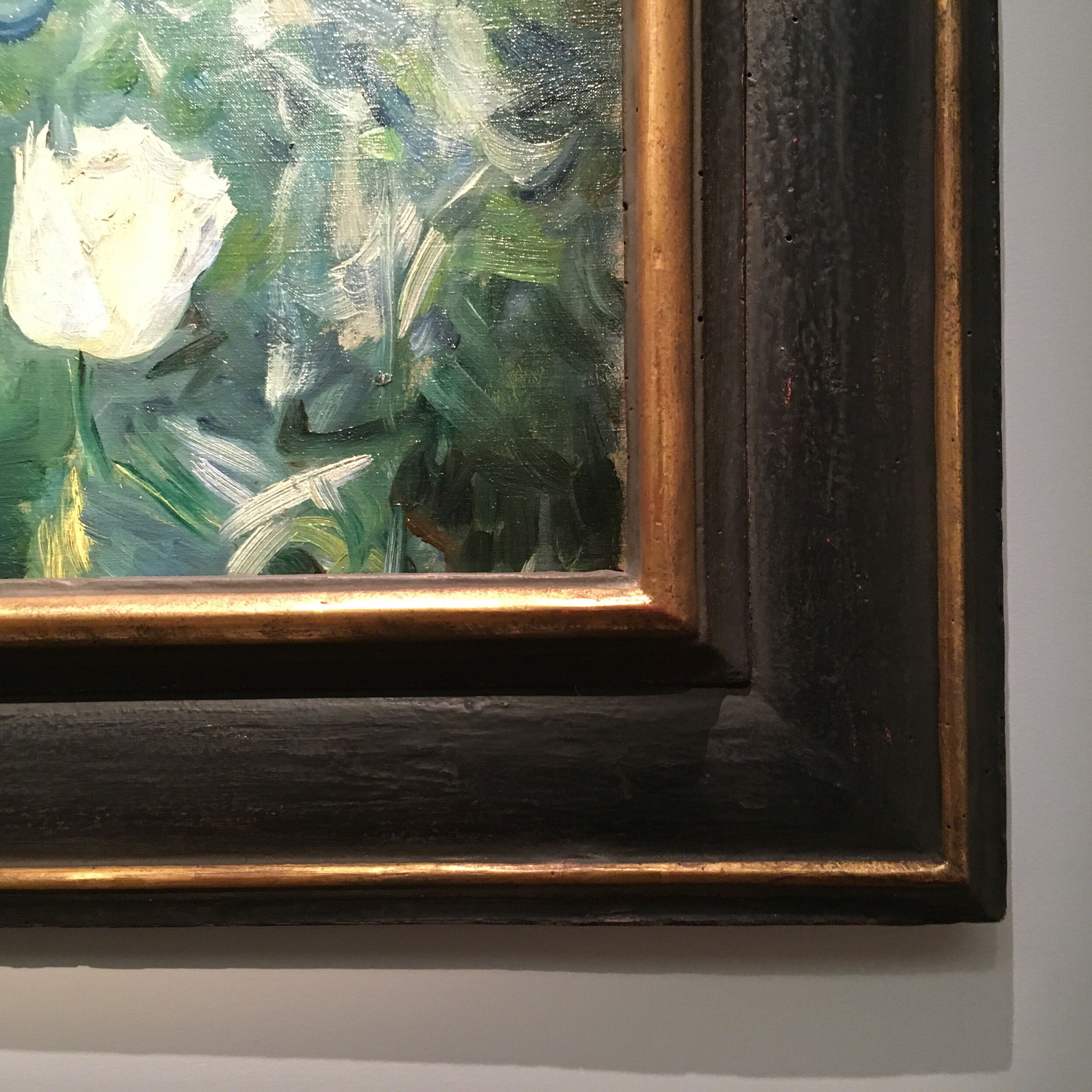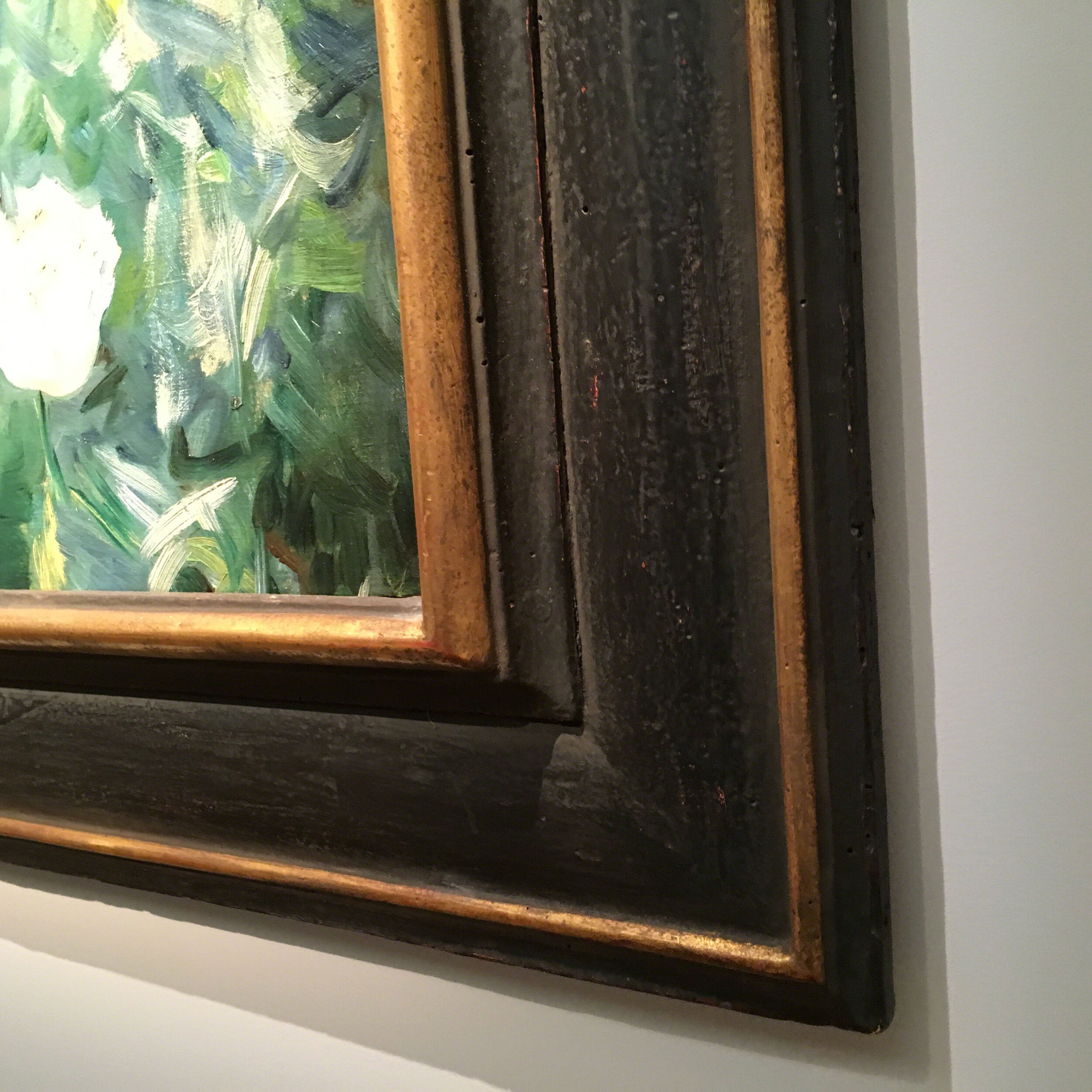SOTHEBY'S NEW YORK
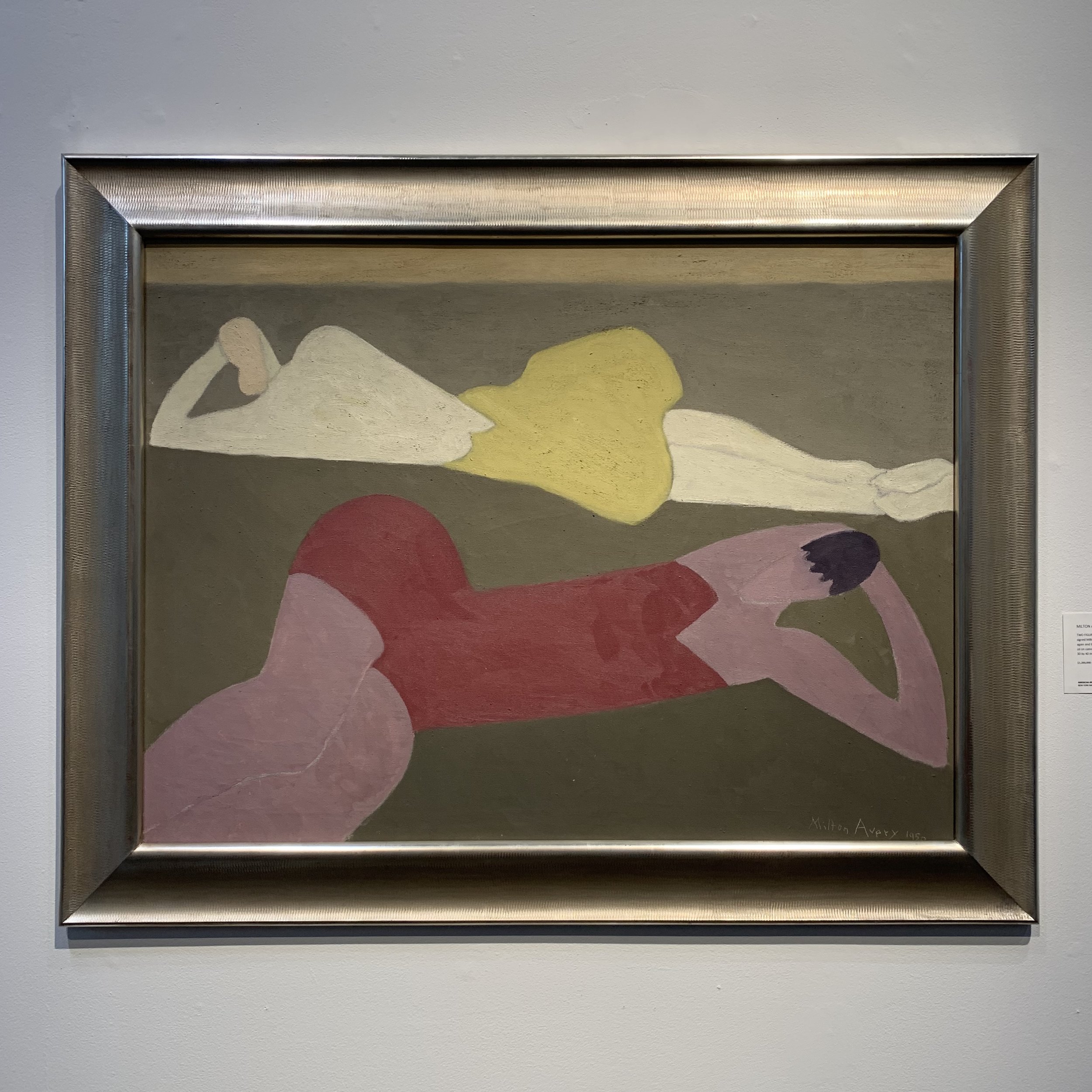
MILTON AVERY (1885-1965)
Two Figures on Beach, 1950, oil on canvas, 30 x 40 inches. Auction estimate $1,200,000–1,800,00; American Art New York, May 2019. Custom-made frame, American Modernist Sandelin-style, patinated 12k white gold gilded and combed wood finish, molding width: 4-1/4”
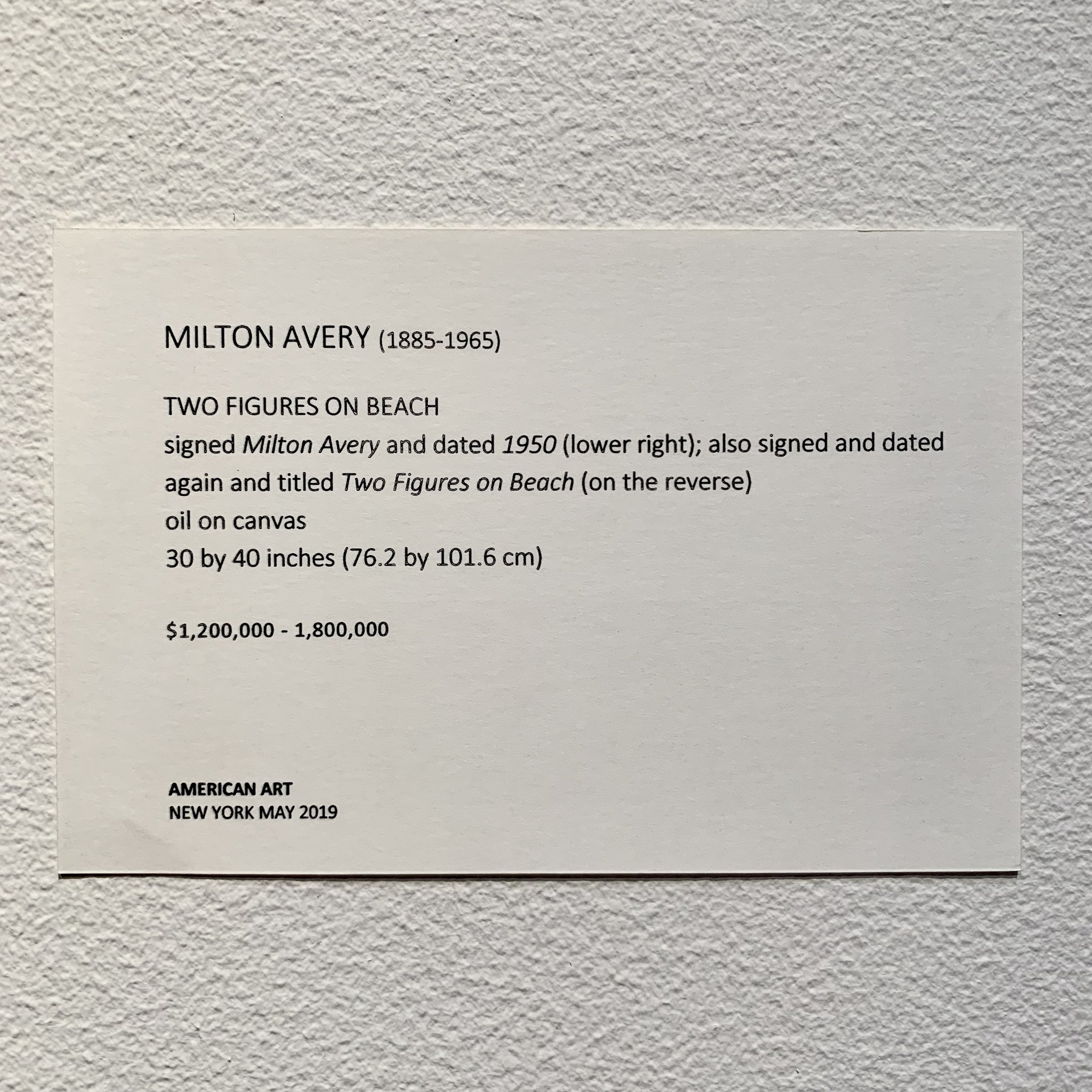


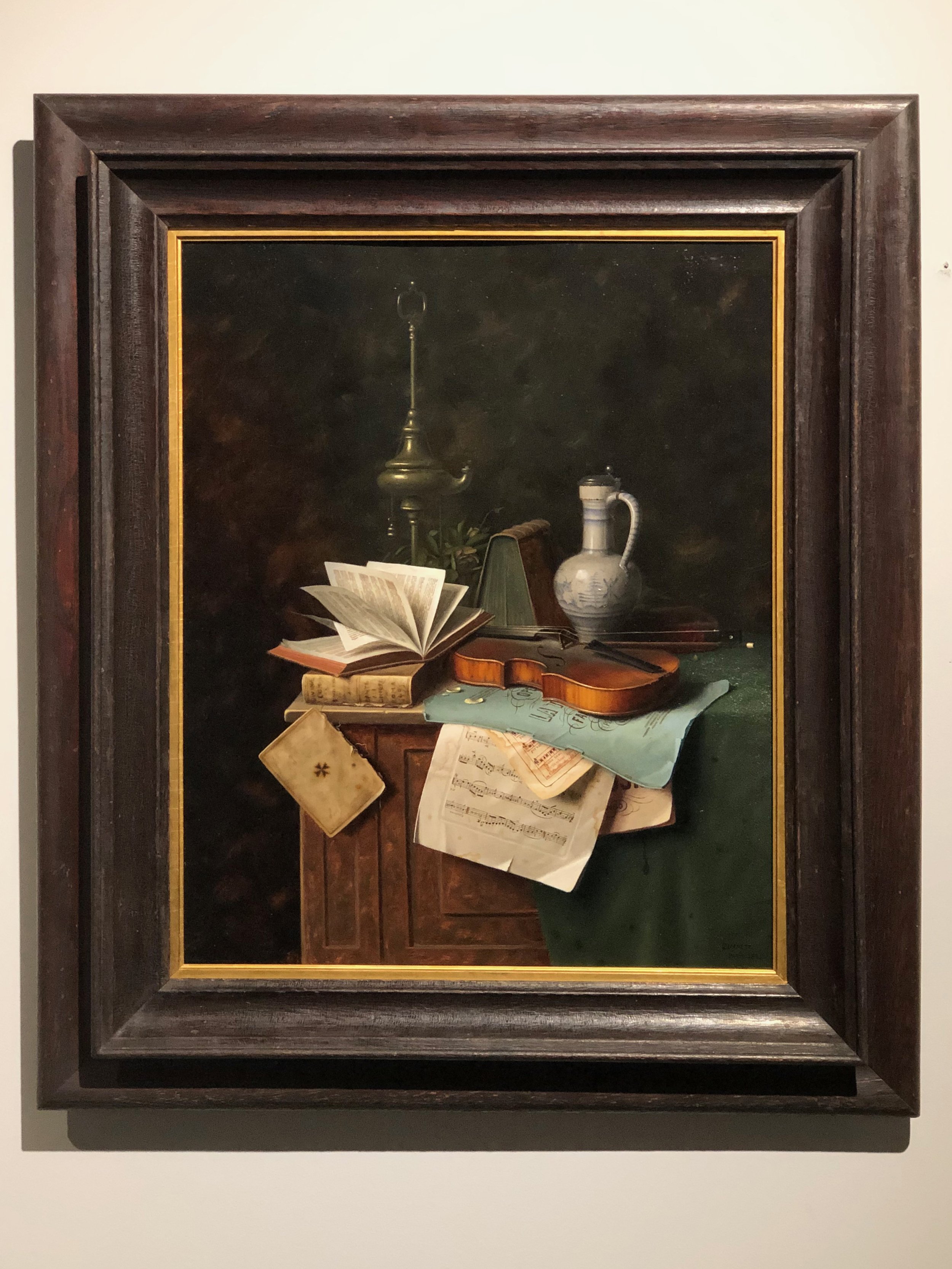
WILLIAM MICHAEL HARNETT (1848–1892)
Still Life with Violin, 1885, oil on panel, 21-5/8 x 17-5/8 in. Framed by Gill & Lagodich for Sotheby’s New York, Nov. 19, 2019, Lot 43, sale price $500,000. Period 19th-century American painted wood frame with period gilded flat-and-hollow liner, molding width 4-3/8 in. "In 1885, William Michael Harnett worked briefly in Paris, where he is known to have completed a version of After the Hunt and at least two still lifes on panel. … In the present work, Harnett alludes to objects related to his travels abroad, including the dated vellum book of Dante's Divina Comemedia. Writing on the importance of the objects that the artist included, John Wilmerding explains that Harnett "presented objects from contemporary experience that had been subjected to use and wear, thereby linking the past to the present" (William M. Harnett, New York 1992, p. 153). The delicate balance struck between the old and the new—the European tradition and the American experiment—echoes the sentiment of the age and is infused with subtle social commentary.” —Sotheby’s catalogue note.
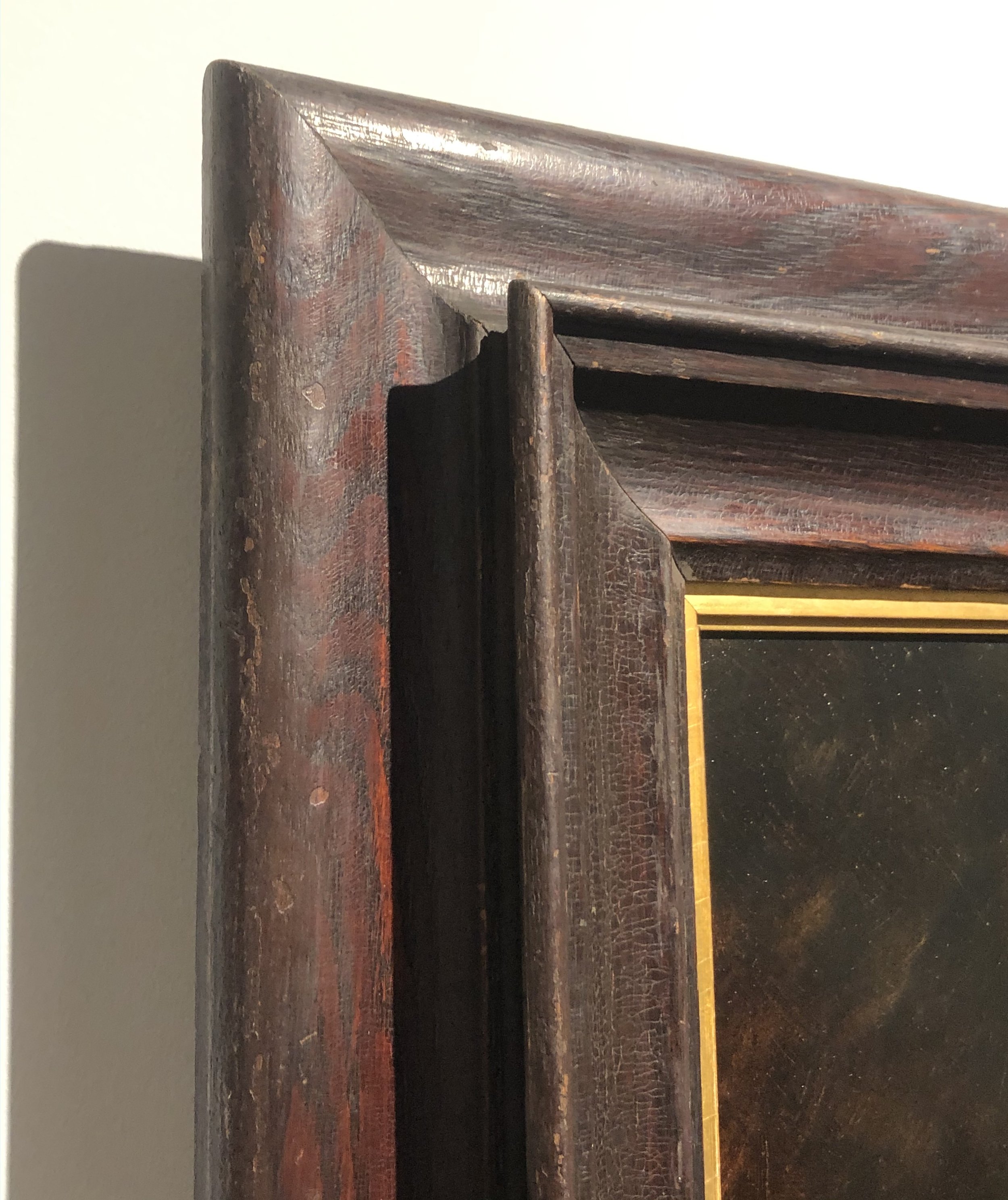
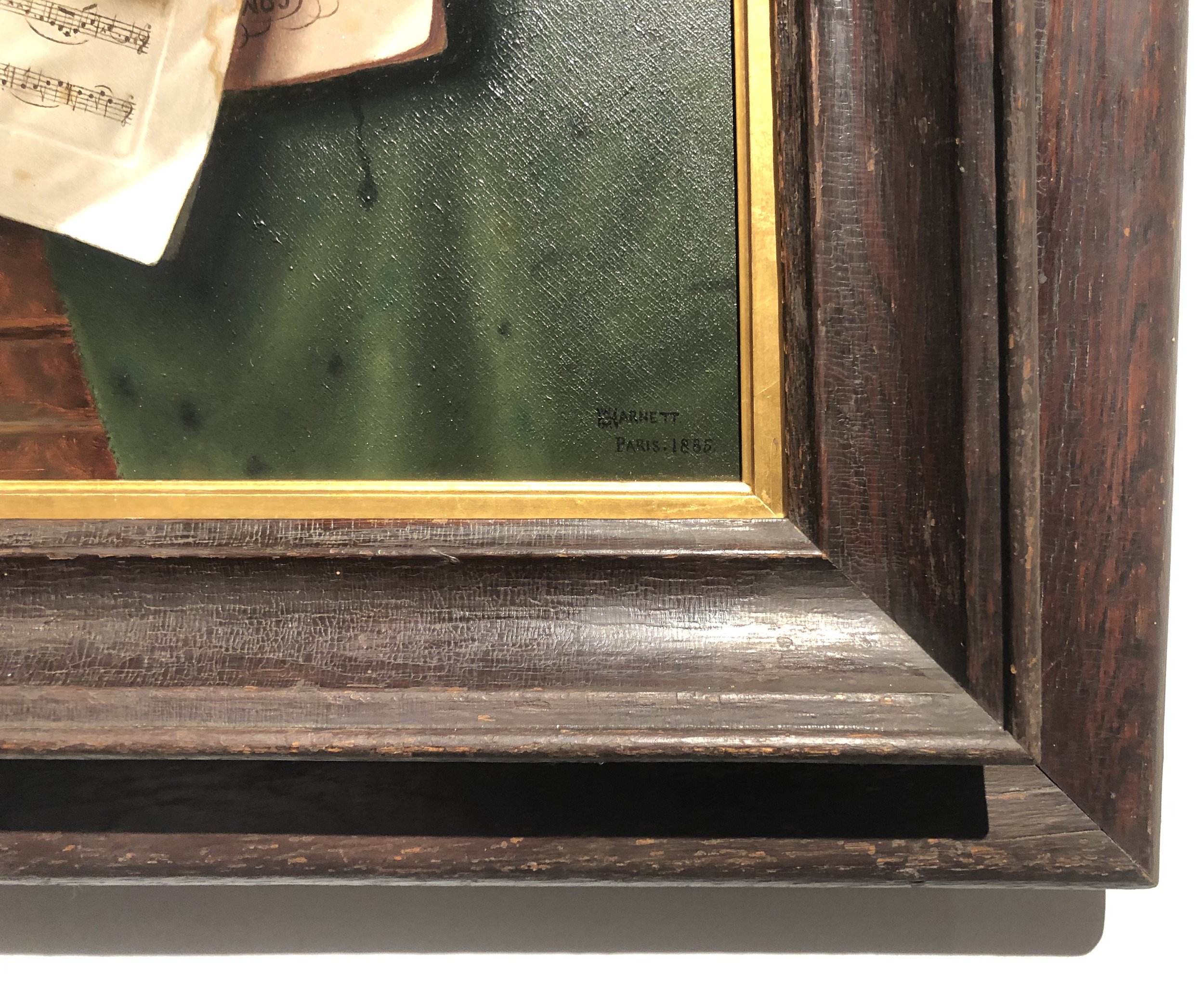
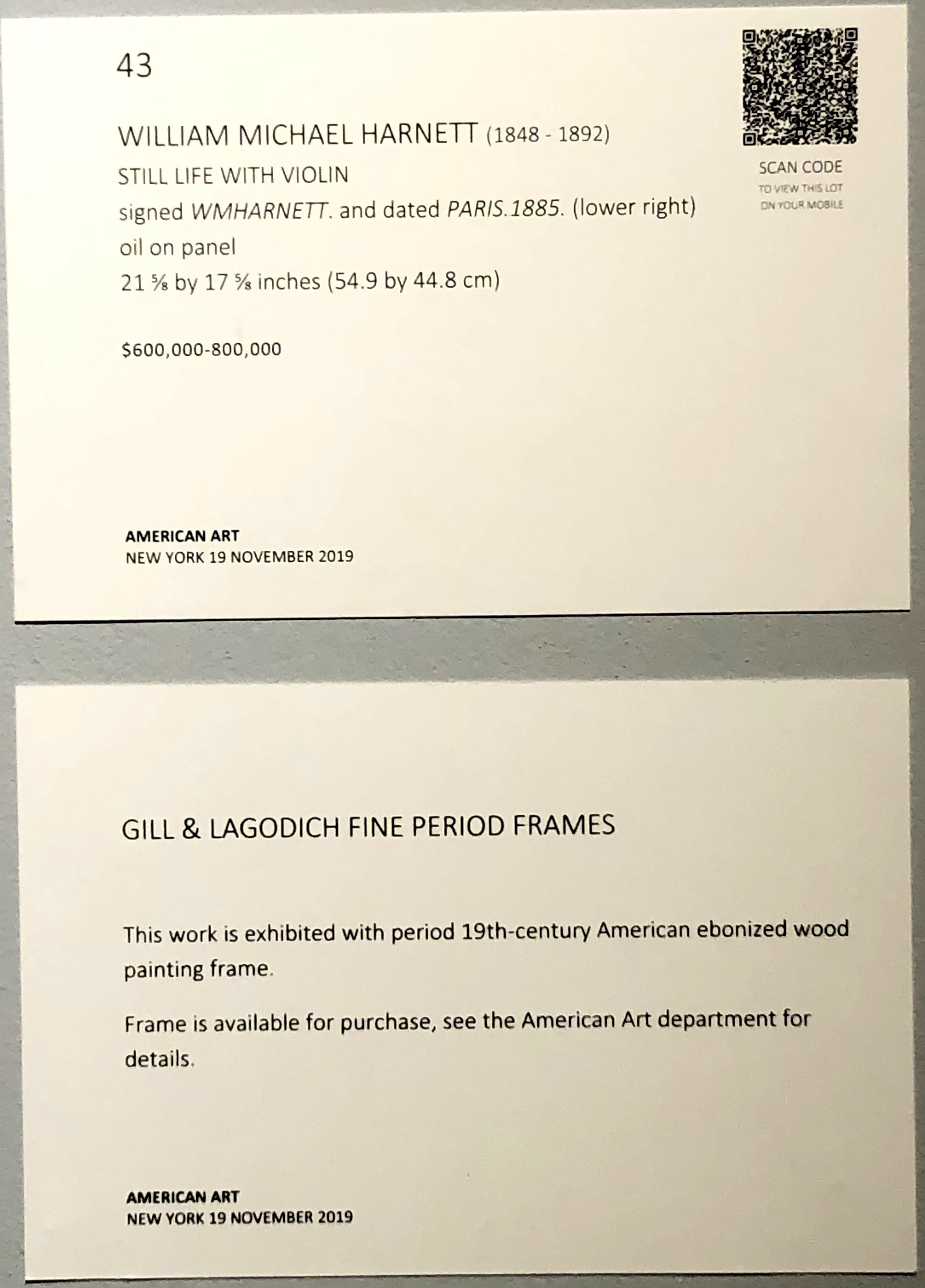
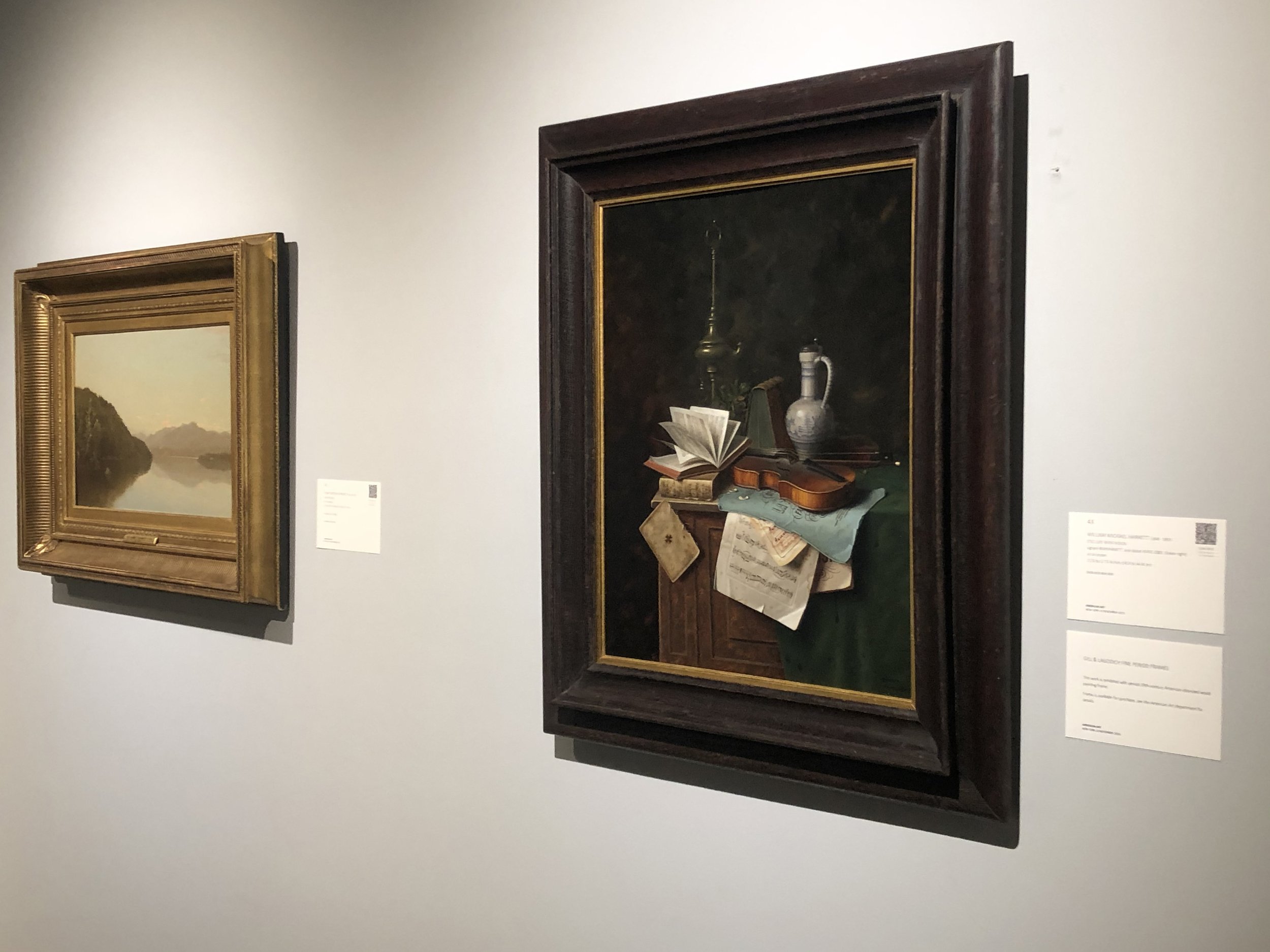
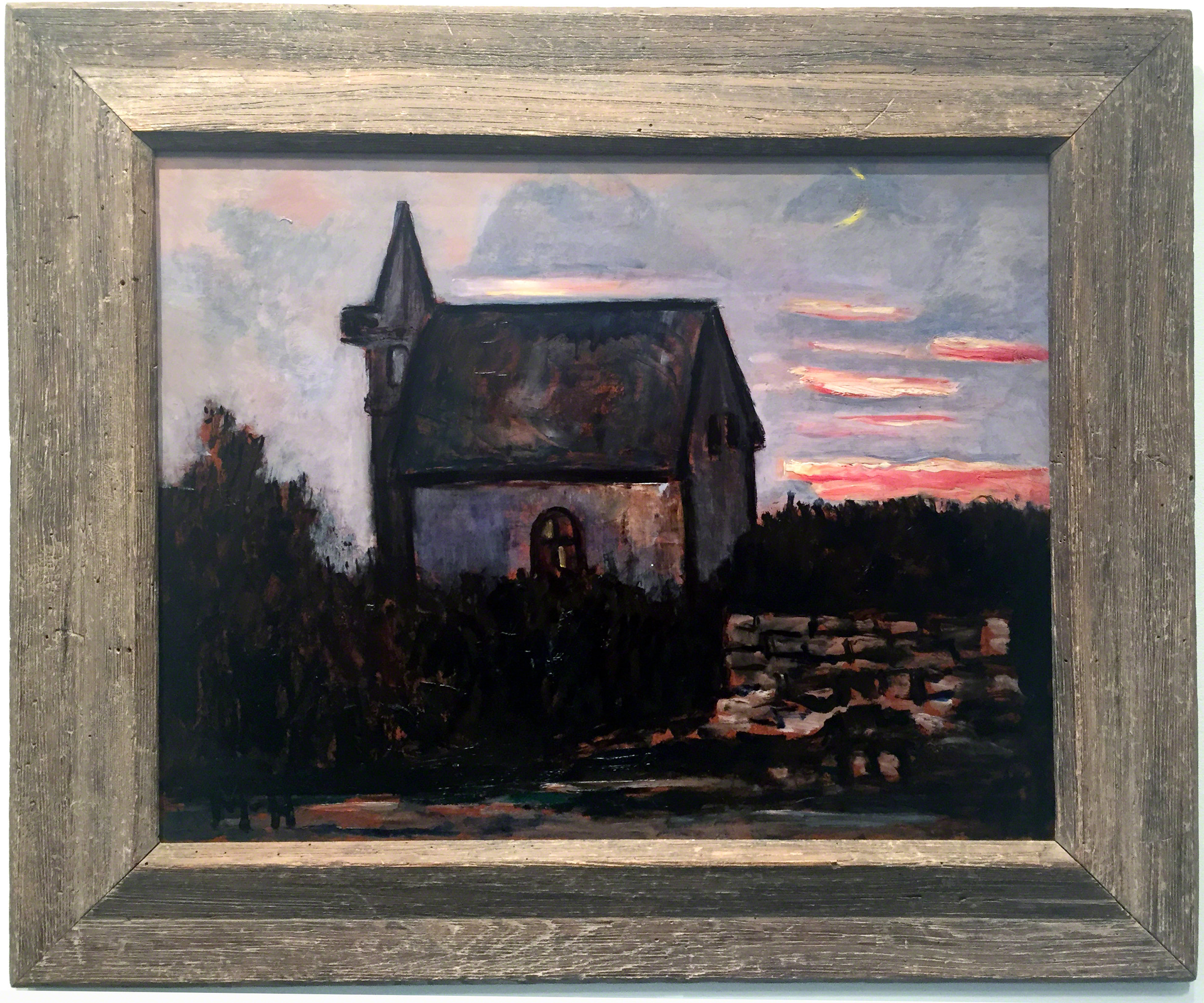
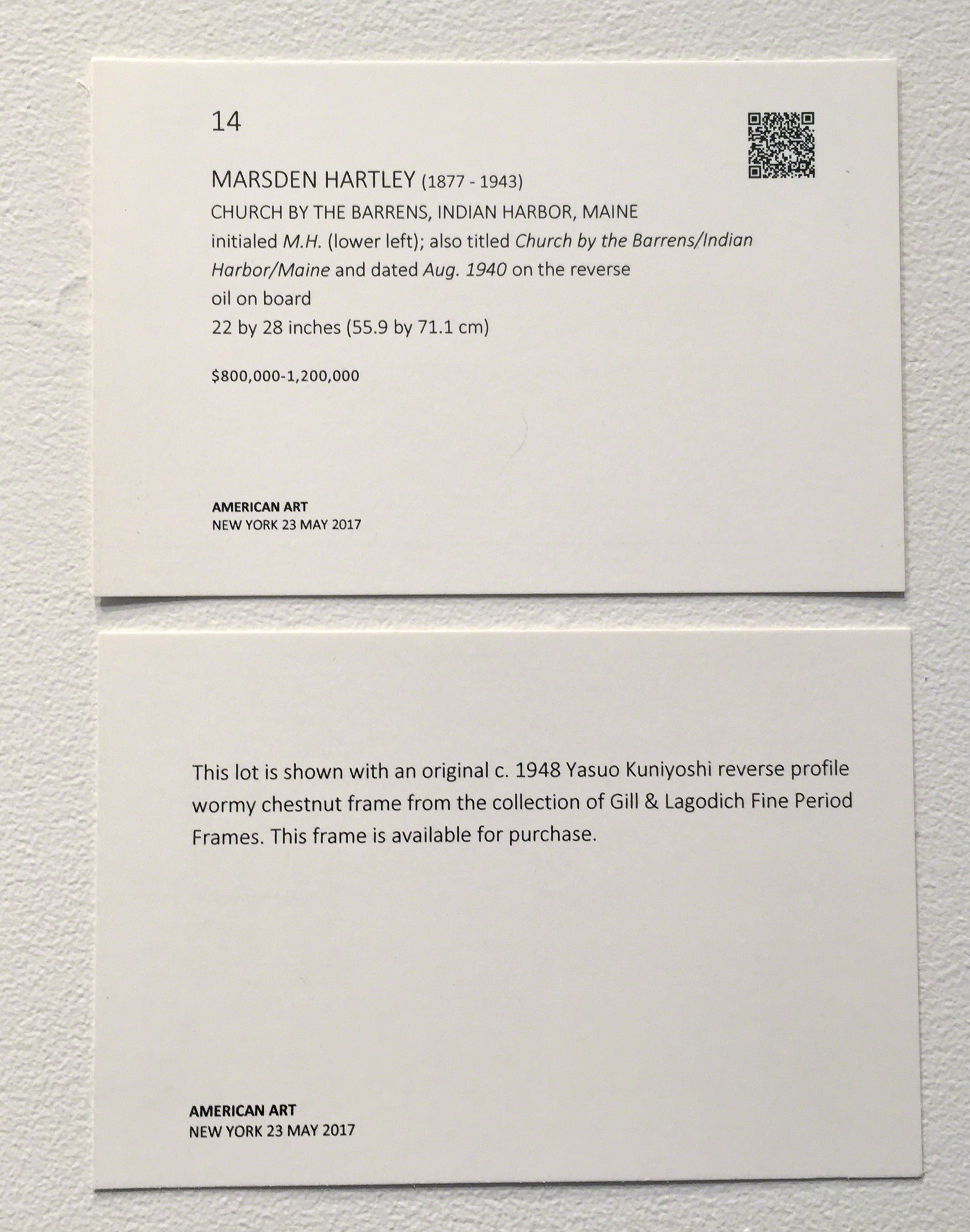

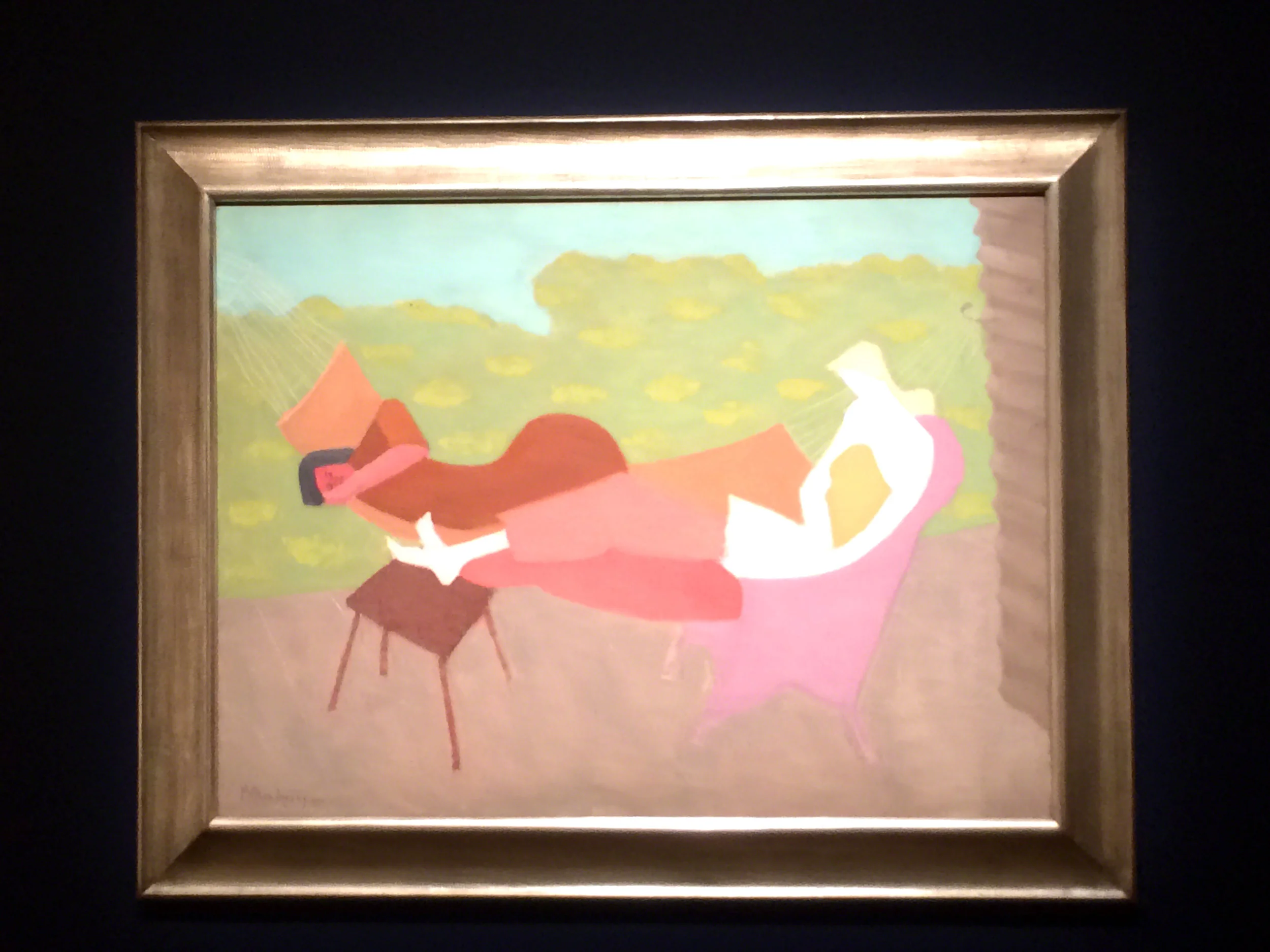
MILTON AVERY (1885–1965)
March and Sally Outdoors, 1950, oil on canvas, 30 x 40 inches. Gill & Lagodich custom-made American Modernist Sandelin-style frame; patinated 12k white gold gilded and combed wood, molding width: 4-1/4” Sotheby’s American Art Sale, 21 May 2014, est. $2,000,000-3,000,000. LOT SOLD $5,653,000. “Painted in 1950, Milton Avery’s radiant, March and Sally Outdoors, belongs to a remarkably innovative and productive period in the artist’s nearly 50-year career. Known as a particularly reserved personality, Avery preferred the company of his family and close friends. Because of his penchant for sketching the world around him, these people figure prominently in his prolific body of work. March and Sally Outdoors is one of the most sophisticated and intimate renderings Avery executed of his beloved wife and daughter, his two most important companions and muses (Fig. 1). He married fellow artist Sally Michel in 1926, an event described by scholars as, “the most decisive in Avery’s life and career” (Barbara Haskell, Milton Avery, New York, 1982, p. 26). Their only daughter, March, was born in 1932, and became a frequent source of inspiration for her father throughout her childhood and adolescence. While images of both women pervade Avery’s oeuvre, March and Sally Outdoors is an outstanding example of this iconic imagery, expressively capturing the close and unique bond the family shared.” —Sotheby’s catalogue notes excerpt.


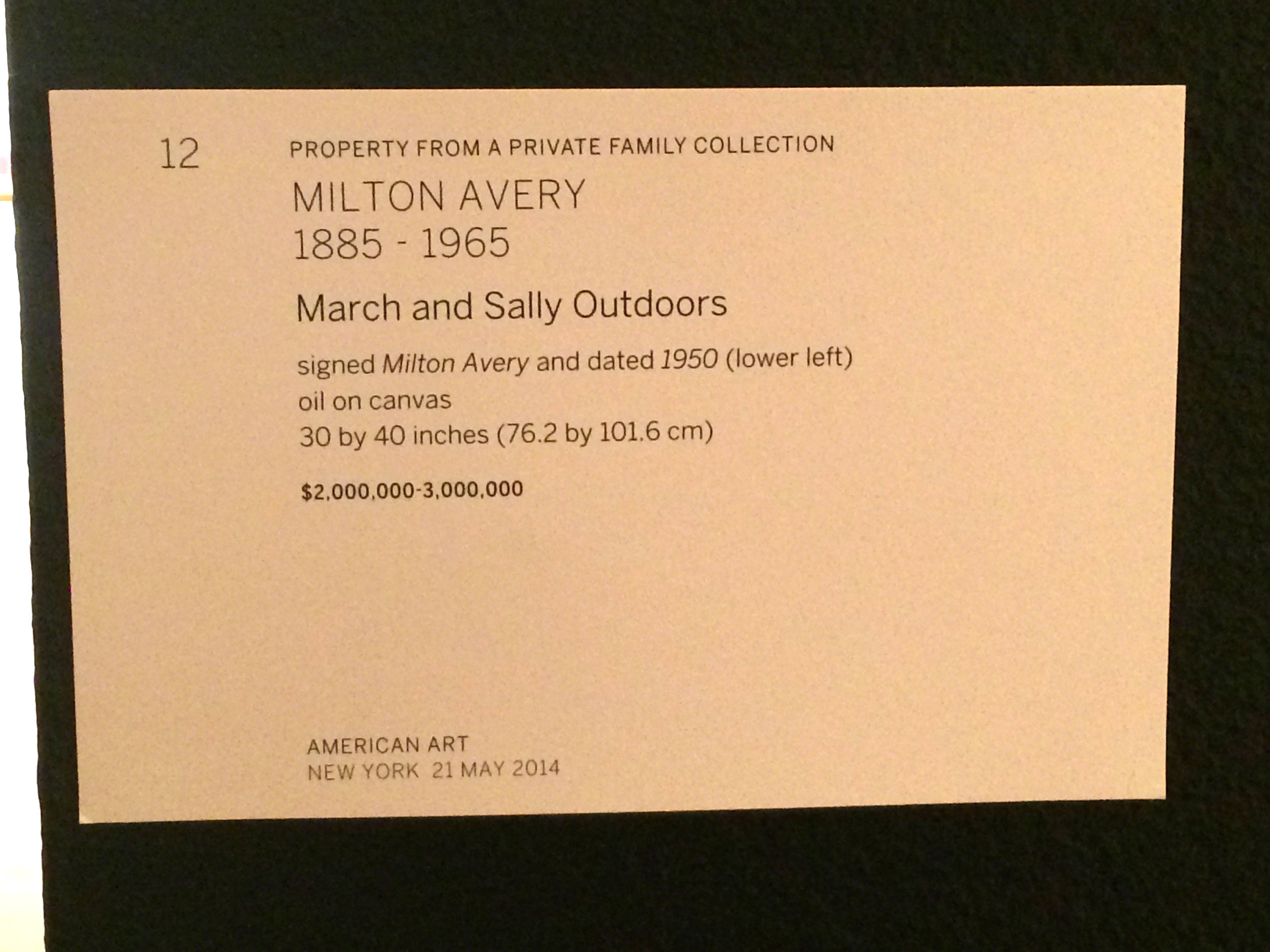

MILTON AVERY (1885–1965)
Dancing Trees, 1953, oil on canvas, 32 x 48 inches. Gill & Lagodich custom-made replica of a c 1930s Modernist painting frame, silver leafed and polychrome gesso on wood, Artist Framing Co., New York, original frame maker., molding width: 3-7/8” Sotheby’s American Art sale 21 May, 2014, LOT SOLD $1,025,000. “In the summer of 1953, Milton Avery and his family escaped the heat of New York City and spent the season at Brydcliffe, an artist’s colony near Woodstock, New York. In Dancing Trees, Avery depicts the dense blue-green forest, lemon yellow sky and pink ground as one flat plane whose layers dynamically convey a sense of the panoramic view. Though many of these works lack a specificity of place, even when based on a particular location, Avery’s “landscapes are not just any landscapes but have the bewitching quality of recalling to each observer a particular landscape” (Una Johnson, Milton Avery, Prints and Drawings, 1930-1964, 1966, p. 14).” —Sotheby’s catalogue notes excerpt.
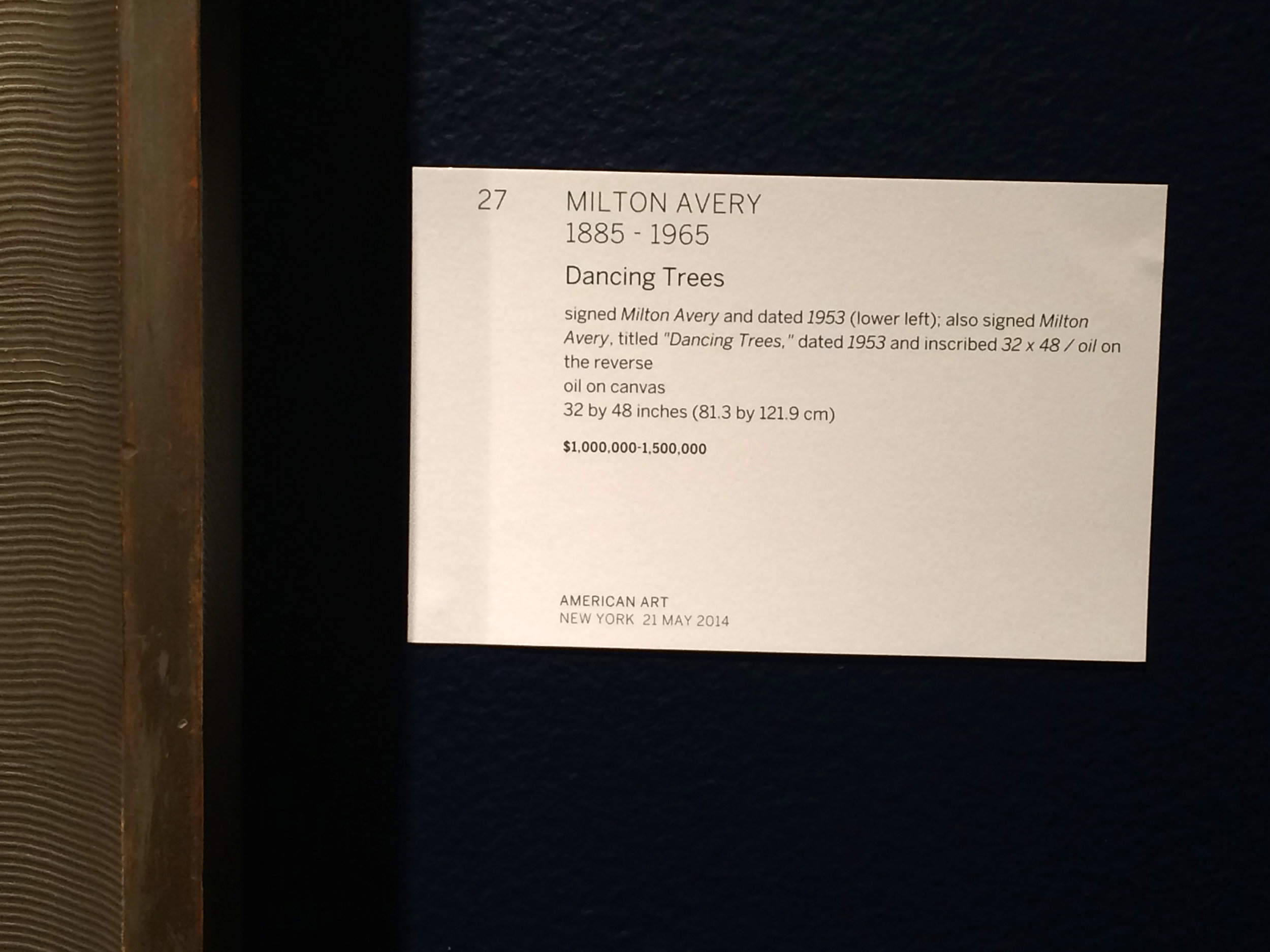
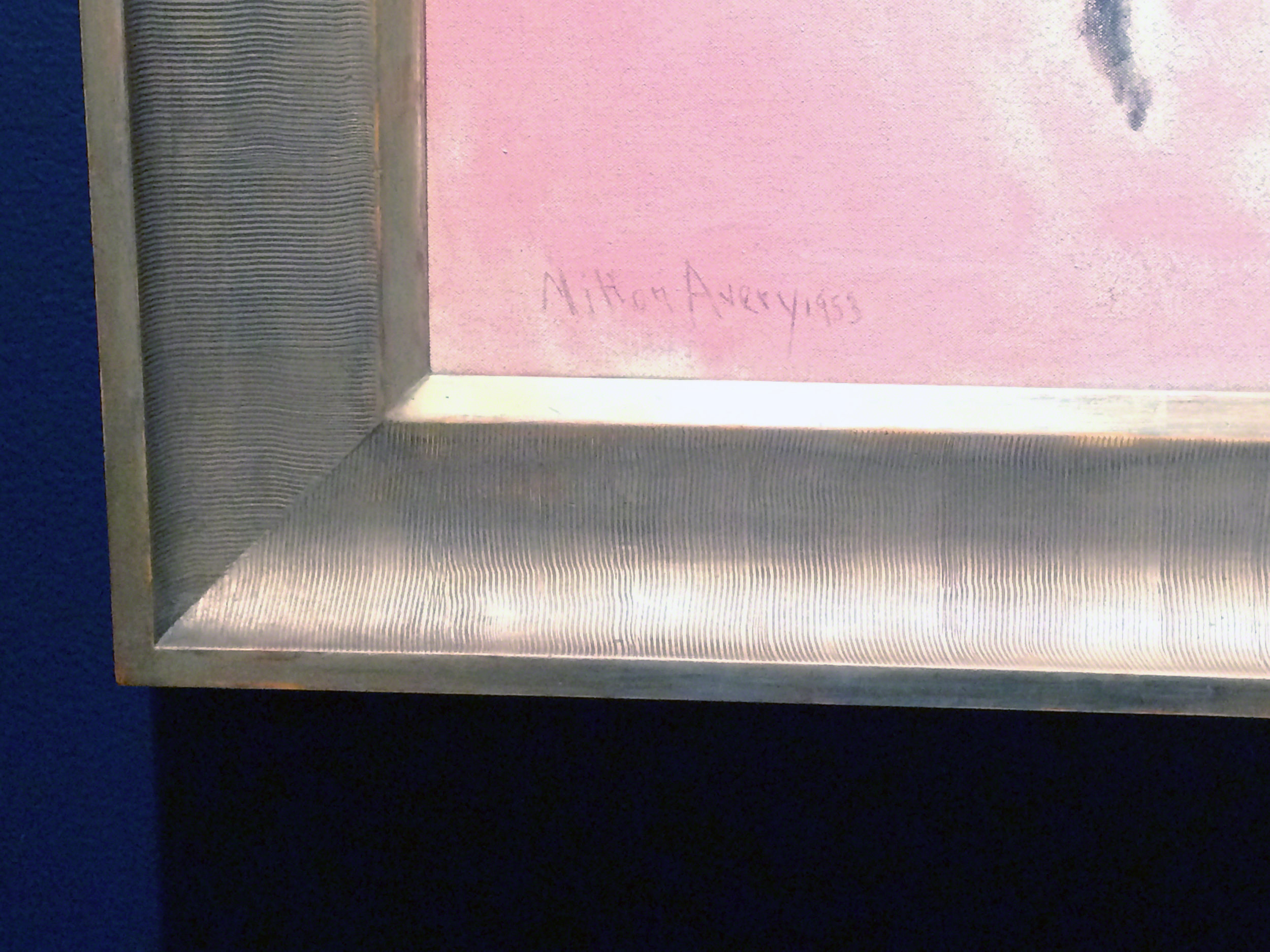
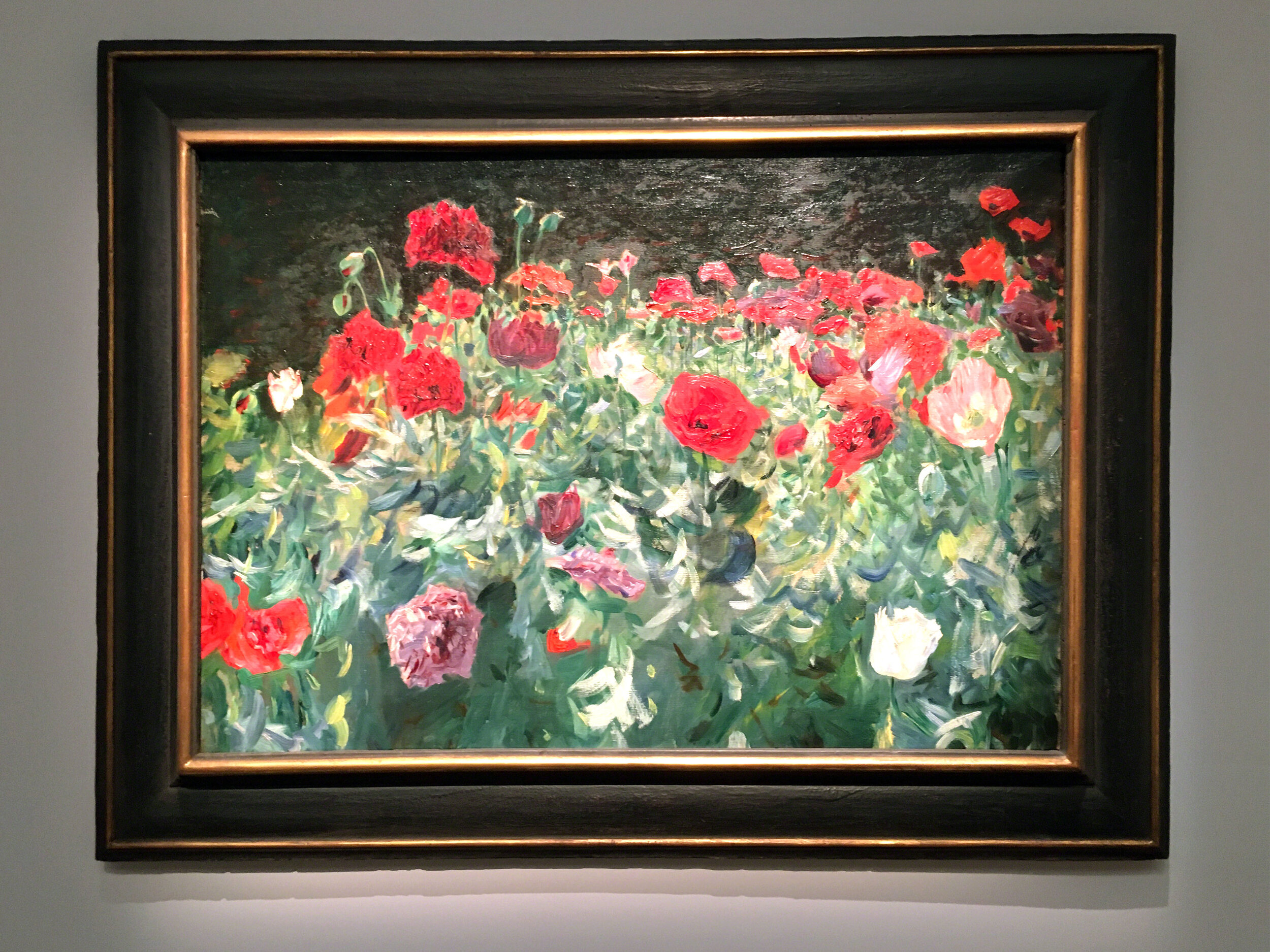
JOHN SINGER SARGENT (1856–1925)
Poppies (A Study of Poppies for “Carnation, Lily, Lily, Rose”), 1886, oil on canvas, 24-3/8 x 35-7/8 inches. Framed by Gill & Lagodich for Sotheby’s New York, period c. 1650-1700 Spanish frame, gilded and polychromed carved wood, reverse cushion profile, molding width 5” Sotheby’s New York American Art Sale 18 MAY 2016 Estimate 4,000,000 — 6,000,000 USD / LOT SOLD. 6,858,000 USD “Poppies belongs to a series of innovative paintings and drawings that John Singer Sargent executed in preparation for his Impressionist masterpiece, Carnation, Lily, Lily, Rose. Sargent created both works at Broadway, a picturesque village in the English Cotswolds where, along with other notable artists of the time, he spent the late summer and early autumn of 1885 and 1886. Sargent had by this time become a well-known portrait painter of elite society on both sides of the Atlantic and traveled intermittently between England and France for much of the decade. Now immersed in this new pastoral environment, however, he began to engage closely with flower and foliage subjects, and cultivated his growing preoccupation with capturing the most subtle and minute effects of light and shadow on canvas. … “ “Professionally, he continued to accept portrait commissions but his work demonstrates a new boldness that illustrates his break from the conventions of Salon-style studio painting and embrace of an impressionist aesthetic. Painting now with less regard for convention, Sargent felt liberated creatively and as he continued to travel and paint what he saw before him, created "pictures [that] were not only personal statements, [but] gifts to himself; they were his resolution of outdoor painting. They were his spontaneous, snapshot vision. They represent the culmination of his powers as an observer able to render quickly those effects of light and color that fell into his field of vision, without regard for composition of traditional balance. They were the free field for his eye in which he could run to paint as he saw it, life as it was before him, friends if he chose to, and, above all, color and the effect of light on it" (Warren Adelson, Sargent at Broadway: The Impressionist Years, New York, 1986, p. 60).
